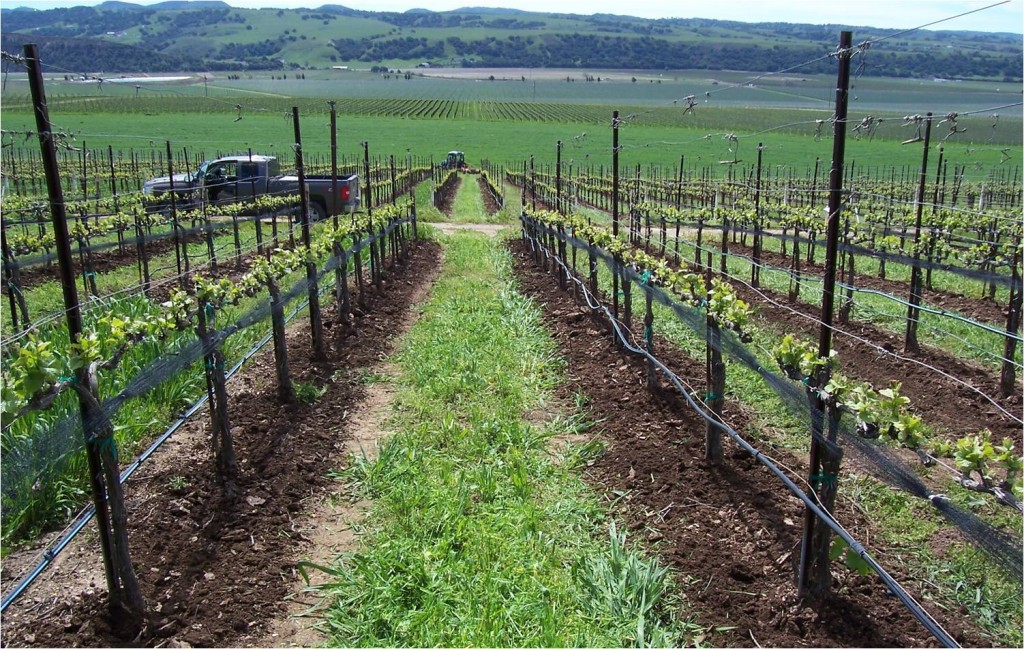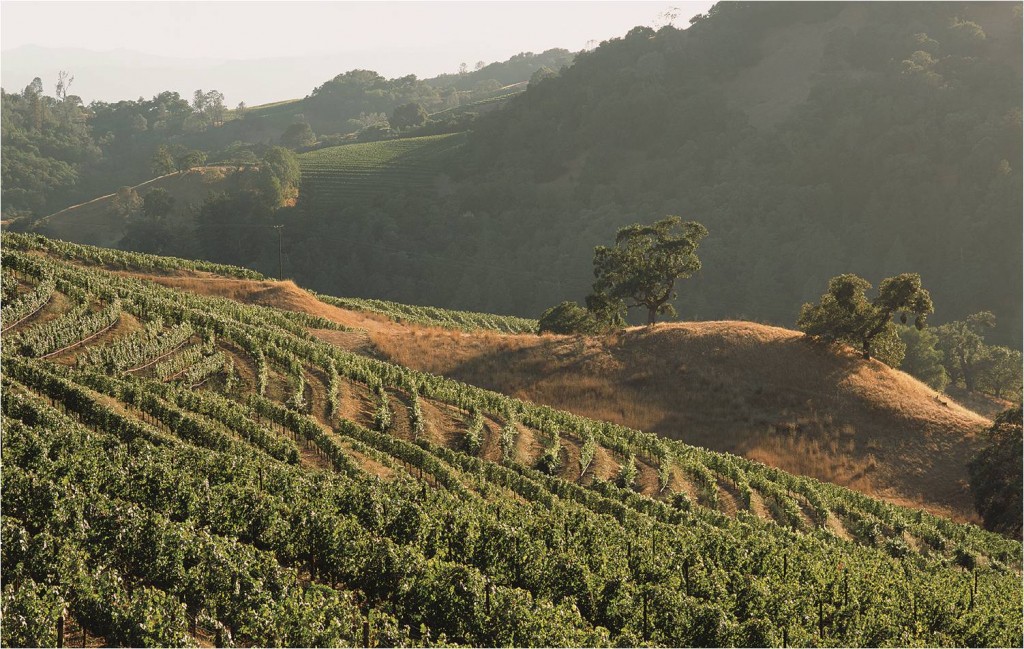Keeping It Together During the Rainy Season
During the winter months not many people are thinking about vineyards. But we begin preparing for the rainy season right after harvest. If we’re not ready for it, erosion from big winter storms can destroy a vineyard and deposit sediment into streams, causing problems for fisheries.
Most of our vineyards are on mountains tops, ridges and hillsides, which is where we believe the highest quality grapes are grown. This is exactly where soil erosion can be the most dramatic if the proper precautions aren’t taken. We use a series of techniques to disrupt rainfall runoff and prevent the offsite movement of sediment.
Below are a series of photos taken by our vineyard teams that illustrate some of the best practices we include while we farm. Each photo has a quick description of what in happening in the vineyard and why it is important.
When a vineyard is planted it’s critical to get cover crops established prior to the rainy season to prevent soil erosion.
Native and resident grasses help to hold water during heavy storms. This secures the soil and gives time for water to percolate into the soil and recharge the underground aquifers.
We use many predacious insects, like ladybugs, to eat pest insects. To promote these beneficial insects areas are seeded specifically to develop habitats known as insectaries.
Terraces are used on steep slopes to disrupt the rapid flow of water downhill and prevent erosion channels.
Jute netting (which you can see in this photo if you look hard) is laid down and seeded to create vegetated perimeters, or buffer zones, around vineyards. Buffer zones naturally filter out sedimentation before water runs into streams.
Deeper rooted plants, like oak trees, are established to provide even more sure footing for the grasses. We’ve planted over 5,500 trees on our vineyards.
All of these measures drastically increase the biodiversity of our vineyards – sometimes in unexpected ways.
Sediment basins are designed by engineers to capture storm water and settle out sedimentation.
Lastly, drains and outlets are fitted with permeable screens to provide a final sediment filtration for winter runoff.
The closer we look, the more complex farming becomes. There’s a lot of detailed, hard work that goes into establishing and maintaining a vineyard that will meet the environmental and viticultural needs of the future. Erosion control is really one of the first steps out of the hundreds we take in growing and making great wine in a sustainable manner.












